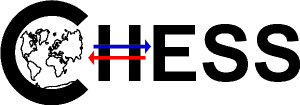The third course on climate science at high latitudes: “eScience for linking Arctic measurements and modeling” was successfully held at Abisko Scientific Research Station 15–24th of October 2019. The main topic of the course was on aerosols in the Arctic, with group work consisting of comparing measurements and model output for aerosol-related variables. The course series is part of Nordic eScience Globalisation Initiative (NeGI), and a collaboration between University of Helsinki, Norwegian Meteorological Institute, Finish IT center for Science and Stockholm University, the latter being responsible for the Abisko course. Funding was mainly provided by Nordforsk, but also Bolin Centre for Climate Research, Arctic Avenue, CHESS and FORCeS.
26 PhD and master students from Swedish, Finnish, Danish, German, and Norwegian universities were, with great help from eight course assistants, introduced to open-source software like Jupyter Lab and Github as well as useful Python packages for model-measurement evaluation. These tools were utilised to analyse recently available CMIP6 data in student projects, with a focus on aerosols and Arctic climate. The six teachers leading the course also gave lectures on these subjects, supplemented by lectures about ongoing research at Abisko research station from resident scientists. Reports from the student projects are now being written by the students, and the results will be presented at the home universities.
During our free time, we enjoyed the variety of saunas at the Abisko research station. The Torneträsk lake invited some brave students to a swim after a warm steamy sauna and to watch Northern Lights. The landscape around Abisko encouraged us to hikes in the Nationalpark on our one free day, which was the perfect Sunday with a sky for cloud enthusiasts. We were encouraged to take the train from our home Universities to Abisko and back. Thus we saved an estimated total of 12 tonnes of CO2.
Text: Herman Fuglestvedt, Franziska Hellmuth and Sigrid J. Bakke

